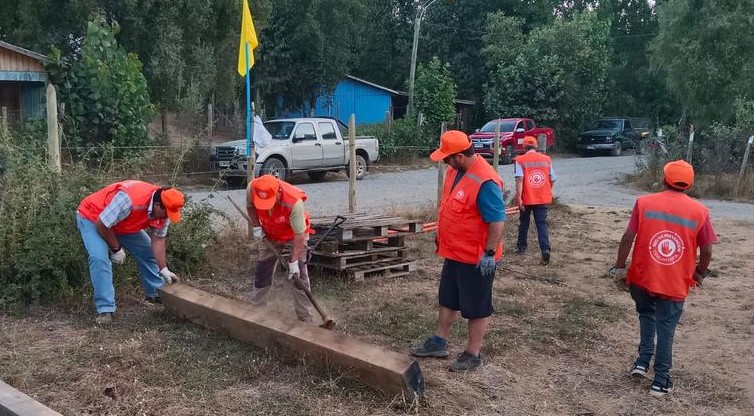Matte and Angelini Groups Shift Investments to Brazil as Timber Industry Accuses Local Crisis
- Arauco and CMPC plan multimillion-dollar initiatives abroad. Meanwhile, Corma acknowledges a sharp decline in forested land in Chile.They propose 9 measures.
While the forestry industry collapses in Chile amid arson attacks and timber theft, major companies in the sector—CMPC (Matte Group) and Arauco (Angelini Group)—have long turned their focus abroad. Each is launching a mega-project in Brazil. Combined, these total over $7 billion.
Has Chile lost its appeal? In late June this year, CMPC’s president, Luis Felipe Gazitúa, sounded the alarm and explained the reason for shifting forestry investments to other countries, stating that "in Chile, it’s impossible to carry out projects."
At an event organized by Irade in Los Ángeles, he shared a key fact: "a pulp mill is an investment of around $4 billion. You understand that no one in their right mind would start such an investment when the project could take 14 years."
The businessman’s remarks—which drew criticism from Minister Mario Marcel—reflect what’s happening in an industry that has steadily declined in Chile since 2018, with fewer plantations, halted operations, and job losses.
The Appeal of Brazil
Capital seeks its own path, and both Arauco and CMPC are no longer focusing as much on Chile. Experts argue they are seeking better environments to capitalize on high pulp prices.
"The growth of these companies and their investment plans in new production are undoubtedly focused abroad, particularly in Brazil. For Arauco, the Sucurlú project, and for CMPC, the Natureza project will mean that, if realized and without new major pulp projects, these companies will rank among the top global pulp producers, just behind Suzano (the world’s largest producer, based in Brazil)," says Bci Corredor de Bolsa analyst José Ignacio Pérez. With Sucurú, the company led by Matias Domeyko will invest $3 billion in a mega-project in Mato Grosso do Sul, which has state government approval.
Previously, the same firm developed a mega-operation in Uruguay with Sweden’s Stora Enso, called Montes del Plata. There, the investment was $2.27 billion, and the project began operations on July 10, 2014.
In CMPC’s case, the Matte Group’s forestry arm will make Chile’s largest foreign investment. It will commit over $4.5 billion to develop Natureza. The company arrived in Brazil in 2009 and already has a major operation in Porto Alegre (Guaíba).
"In the future, both companies’ major projects involve large pulp plants in Brazil, attributed to the fact that, for Brazil, the forestry sector is strategic, and states and municipalities are keen to support companies in developing projects, as they bring direct benefits. Additionally, timelines for large-scale projects are shorter than those seen in Chile," explains Credicorp Capital’s Equity Research Manager, Rodrigo Godoy.
Chile Crumbles
In 2018, this industry accounted for 2.1% of GDP, exporting $6.838 billion. Last year, it represented just 1.6%, with shipments of $5.556 billion.
According to Juan José Ugarte, president of the Chilean Wood Corporation (CORMA), 320,000 hectares have been lost in the last decade, moving Chile further from carbon neutrality goals.
Specifically, "forested land has decreased by 14% between 2013 and 2023; annual reforestation has dropped by 99% over the last 17 years, and according to the Capital Goods Corporation (CBC), the forestry sector has no major investments planned for the next five years," says the industry leader.
The last mega forestry investment in Chile was Arauco’s MAPA project in the Biobío Region. The Angelini Group invested over $2.8 billion to build Chile’s largest pulp mill, which began operations in 2022.
A year later, Arauco faced tough times in Chile: "In 2023, we also faced difficult decisions, such as halting operations at the Horcones 1 Sawmill due to market downturns and higher raw material costs. Additionally, in August, pulp production at the Licancel Pulp Plant was indefinitely suspended," stated former president Manuel Bezanilla in the company’s latest report.
But this is just the tip of the iceberg for an industry comprising hundreds of small and medium-sized timber businesses that rely on the value chain of large forestry firms now clinging to other markets.
Arson attacks, timber theft, wildfires, and so-called "permisología" (excessive red tape) have hit the forestry sector hard. While Chile’s economy grew 1.5% annually in recent years, the forestry industry shrank by an average of 8.6% yearly for pulp and 7.8% for wood processing. These figures contrast with the current boom in other countries.
"The forestry industry is thriving in Uruguay and Brazil and emerging in Colombia. In Chile, however, we face strong disincentives, including high costs—today, insurance in the sector is unaffordable for small producers, for example," says Ugarte, noting that the sector has lost 3,200 jobs annually (2012–2022 average) and 200 sawmills.
Corma’s 9 Measures
Corma proposed a series of measures to revive the industry, including restoring 100,000 burned hectares, promoting afforestation to add 1 million hectares of forests by 2049, and amending the bill to strengthen wildfire prevention and combat, among others.
Source: Subscription edition of
La Segunda{{TEXT_27}}

















